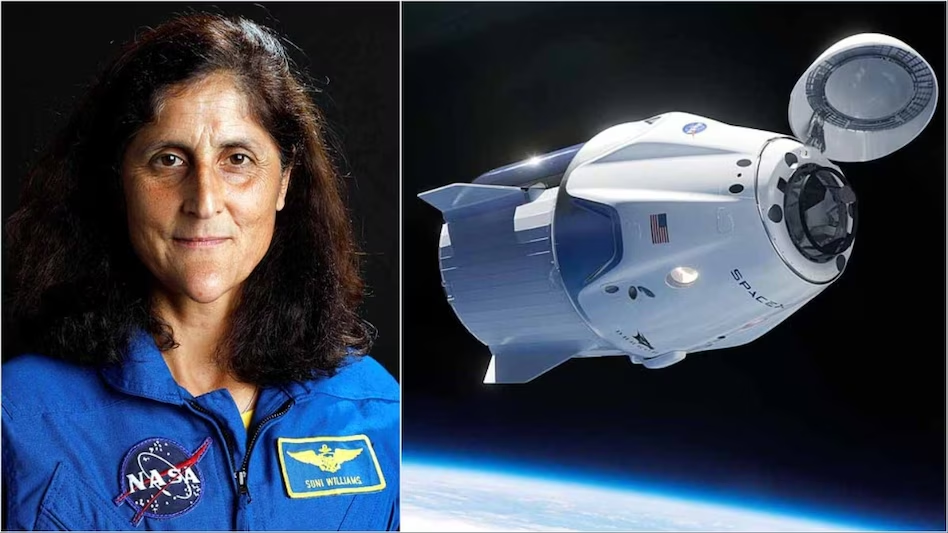NASA astronaut Sunita Williams, the first Indian-origin woman to command the International Space Station (ISS), has once again demonstrated her exceptional expertise and resilience in space exploration.
On Thursday, Williams completed her first spacewalk since arriving at the ISS over seven months ago, accompanied by fellow NASA astronaut Nick Hague. This remarkable achievement highlights the critical role astronauts play in maintaining and advancing humanity’s presence in space.
A Pioneering Spacewalk: Maintenance and Repairs in Low Earth Orbit
The spacewalk was a vital mission aimed at addressing overdue maintenance tasks and ensuring the ISS remains in optimal working condition. The pair ventured outside the ISS as it orbited 260 miles above Turkmenistan, marking another milestone in NASA’s efforts to sustain the world’s most advanced orbital laboratory.
“I’m coming out,” Williams radioed, signaling her readiness for the challenging task ahead. Equipped with advanced tools and wearing their protective extravehicular mobility units, Williams and Hague worked meticulously to repair critical systems on the ISS.
The spacewalk not only reinforced the importance of teamwork in space exploration but also underscored the complexities of conducting repairs in the harsh environment of low Earth orbit. Astronauts must navigate microgravity, extreme temperatures, and the risk of space debris while performing intricate tasks that are critical to the station’s functionality.
Read : Sunita Williams, Wilmore to Have Smoked Turkey on Thanksgiving on Space Station
Williams’ experience as a veteran astronaut was evident during the mission. Her ability to adapt to the demanding environment and collaborate seamlessly with Hague ensured the successful completion of the repairs. This achievement is a testament to her enduring contributions to space exploration and her status as a role model for aspiring astronauts worldwide.
Overcoming Challenges: Delays and Extended Missions
Sunita Williams’ spacewalk is a part of a larger narrative of resilience and adaptability in the face of unexpected challenges. Williams and fellow astronaut Butch Wilmore originally launched aboard Boeing’s Starliner capsule in June, expecting to conduct a weeklong test flight before returning to Earth. However, technical issues with the Starliner capsule disrupted their plans, leading to a series of delays.
NASA ultimately ordered the Starliner capsule to return to Earth without its crew, a decision that extended Williams’ and Wilmore’s stay on the ISS. Compounding this challenge were delays in SpaceX’s launch of replacement astronauts, which further prolonged their mission.
LIVE: Two @NASA_Astronauts, Nick Hague and Suni Williams, step outside of the @Space_Station to support station upgrades, including repairs to our NICER (Neutron star Interior Composition Explorer) X-ray telescope. https://t.co/0VP296OmRY
— NASA (@NASA) January 16, 2025
Despite these setbacks, Williams and her team have continued to demonstrate unwavering dedication to their mission. Their extended stay on the ISS has provided additional opportunities to conduct scientific research, perform maintenance tasks, and contribute to the station’s ongoing operations.
The adaptability shown by Williams and her colleagues highlights the importance of flexibility and problem-solving skills in space exploration. It also underscores the critical role of astronauts in addressing unexpected challenges and ensuring the success of complex missions.
The Future of Space Exploration
As Sunita Williams prepares for her eventual return to Earth in late March or early April, her contributions to the ISS and space exploration continue to inspire. Her spacewalk is not only a significant personal milestone but also a reminder of the collaborative effort required to maintain humanity’s presence in space.
Williams’ journey also reflects the growing importance of international partnerships and technological innovation in advancing space exploration. The ISS itself is a symbol of global cooperation, bringing together space agencies and scientists from around the world to conduct groundbreaking research and push the boundaries of human knowledge.
Looking ahead, the lessons learned from missions like Williams’ will inform the next generation of space exploration initiatives. From lunar missions under NASA’s Artemis program to ambitious plans for Mars exploration, astronauts like Sunita Williams are paving the way for humanity’s future in space.
The challenges faced by Williams and her team also highlight the need for continued investment in space technologies and infrastructure.

As space agencies and private companies work together to develop advanced spacecraft, habitats, and life-support systems, the experiences of astronauts on the ISS will play a crucial role in shaping the future of space exploration.
Sunita Williams’ spacewalk after seven months aboard the ISS is a testament to her skill, resilience, and commitment to advancing humanity’s presence in space. Her achievements serve as an inspiration to people around the world and highlight the critical role of astronauts in addressing the challenges of space exploration.
As Williams and her colleagues continue to push the boundaries of what is possible, their work underscores the importance of international collaboration, technological innovation, and the indomitable spirit of exploration.
Whether conducting repairs on the ISS, overcoming delays, or preparing for future missions, astronauts like Sunita Williams exemplify the best of human ingenuity and determination.
Her story is a powerful reminder of the extraordinary accomplishments that are possible when individuals and organizations come together to pursue a common goal. With her contributions to space exploration, Sunita Williams has cemented her legacy as a pioneer and a trailblazer in the field of space exploration.
let’s enjoy few years on earth with peace and happiness….✍🏼🙏

